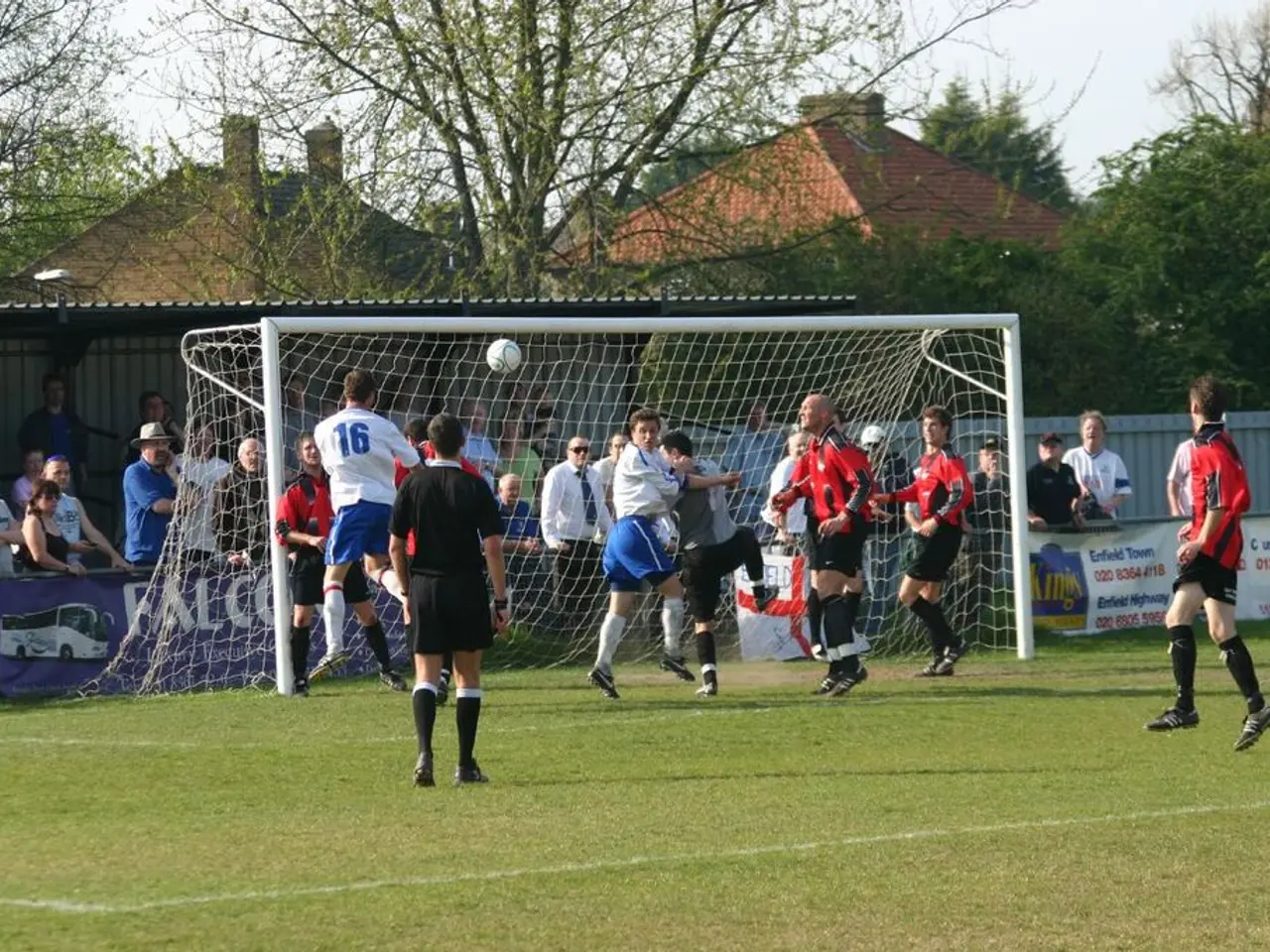Unveiling disputes and decisions: The impact of real-time VAR display on football referees and fans
Stadium official forced into public dining, consumed by watching crowd
Preparing for the Club World Cup in the USA, FIFA is introducing a bold move to boost transparency - broadcasting in-stadium the sequences referees review on VAR following interventions. This strategic move, however, has sparked heated debates.
In the quest to create an exceptional new tournament under President Gianni Infantino's guidance, FIFA is leaving no stone unturned. The Club World Cup kick-off is anticipated on June 14, and fans are eagerly awaiting unprecedented technology advancements, especially regarding VAR.
VAR has been met with mixed reactions; many perceive it as a tool intended to correct clear mistakes, while debates persist as to its threshold and interpretation of mistakes. So, what transpires in a stadium when a contentious scene is reviewed? What if the infamous handball by Spanish player Marc Cucurella against Germany in the 2024 Euro quarter-finals resurfaces?
Football fans don't care about right or wrong. They feed on emotions. Fan eruptions are likely when delicate, ambiguous situations are decided, even if the Club World Cup doesn't feature traditional home games. However, introducing real-time sequences in knockout competitions with home and away legs could intensify referee pressure exponentially. Can referees make objective decisions under this immense scrutiny?
A compromise could involve referees making decisions first, followed by the playback, preserving both transparency and referees' authority to stand by their decisions. Real-time feedback might uplift fan involvement by providing unparalleled clarity, but it can also amplify already intense emotions. Striking the perfect balance to improve transparency and limit the negative impact on referees and fans remains a challenge.
The implications of real-time VAR display
The Referees' Dilemma
- Objectivity: Making judgments under the pressure of everyone's gaze potentially jeopardizes objectivity. While the technology aims to reduce errors, human biases can influence decisions based on the crowd's response.
- Pressure: The visible review process intensifies pressure on referees to make flawless decisions. The fear of criticism from fans and peers may cause referees to exercise more caution.
The Emotional Rollercoaster
- Engagement: Broadcasting real-time VAR sequences may enhance fan engagement by offering an unparalleled, live insight into decision-making.
- Emotion: The increased visibility, however, amplifies emotional reactions. Disagreements with decisions might ignite sustained tension and stronger emotional investments in the game.
The Bottom Line
The real-time display of VAR sequences brings both benefits and challenges. On one hand, transparency increases, and fans may feel more involved in the game. On the other hand, emotions can escalate, and referees face greater pressure during critical, ambiguous moments.
Managing this delicate balance to foster transparency while minimizing the impact on both referees and fans requires careful consideration. After all, fairness and excitement should coexist harmoniously in the beautiful game.
- I'm not going to be able to do this, referees might find it challenging to maintain objectivity when making decisions under the intense scrutiny of real-time VAR display, which could potentially lead to increased human biases in their judgments.
- With the introduction of real-time VAR sequences, sports-analysis enthusiasts and football fans alike will have a unique opportunity to witness sports in a whole new light, as decisions are made and scrutinized in real-time, adding a new layer of excitement to an already passionate sports environment.




